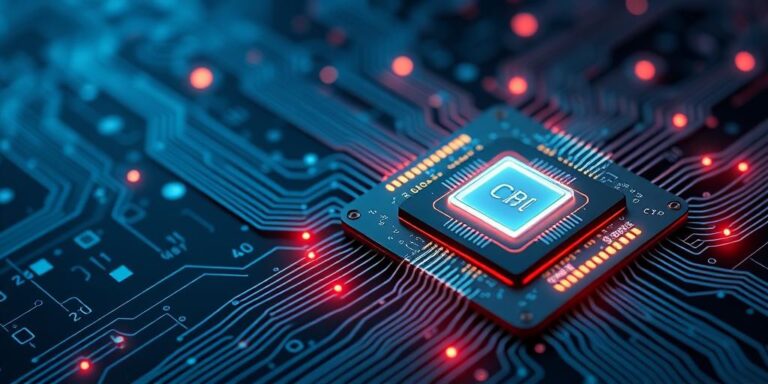The Future of CPU Design: Beyond Moore’s Law (2025 Strategies)
For decades, Moore’s Law has been the guiding principle of CPU development, predicting the doubling of transistors on a microchip every two years. However, as we approach the physical limits of silicon, the future of CPU design demands innovative strategies that go beyond simply shrinking transistors. This article explores the key approaches that will shape CPU architecture in 2025 and beyond.
The End of Scaling?
Moore’s Law isn’t necessarily ‘dead,’ but its pace has undeniably slowed. The challenges of heat dissipation, quantum tunneling, and manufacturing complexity make it increasingly difficult and expensive to continue shrinking transistors at the historical rate. Therefore, the industry is looking at alternative methods to improve performance and efficiency.
Key Strategies for Future CPU Design:
- Chiplet Architectures:
- Concept: Instead of monolithic dies, CPUs will be constructed from multiple smaller chiplets, each designed for a specific function (e.g., I/O, memory controllers, specialized accelerators). These chiplets are then interconnected using advanced packaging technologies.
- Benefits: Increased yield, reduced costs, and the ability to mix and match different manufacturing processes for different components.
- Example: AMD’s Ryzen CPUs already utilize a chiplet design, demonstrating the viability of this approach.
- 3D Integration:
- Concept: Stacking multiple layers of silicon vertically to create a 3D CPU. This reduces the distance signals need to travel, improving performance and energy efficiency.
- Benefits: Higher transistor density, lower power consumption, and improved memory bandwidth.
- Challenges: Heat dissipation and manufacturing complexity are significant hurdles.
- Specialized Accelerators:
- Concept: Incorporating dedicated hardware accelerators for specific workloads, such as AI, machine learning, video encoding, and cryptography.
- Benefits: Significant performance gains for targeted applications without increasing overall power consumption.
- Examples: Apple’s Neural Engine in their A-series chips and Google’s Tensor Processing Units (TPUs) are examples of this trend.
- Advanced Interconnects:
- Concept: Developing faster and more efficient ways for different components within a CPU (or between chiplets) to communicate.
- Benefits: Reduced latency, increased bandwidth, and improved overall system performance.
- Examples: Technologies like silicon photonics and advanced packaging techniques are crucial for achieving high-speed interconnects.
- New Materials and Transistor Designs:
- Concept: Exploring alternative materials beyond silicon, such as graphene or carbon nanotubes, and developing new transistor designs (e.g., gate-all-around (GAA) transistors).
- Benefits: Improved energy efficiency, higher switching speeds, and potentially smaller transistor sizes.
- Challenges: These technologies are still in the early stages of development and face significant manufacturing challenges.
- Quantum Computing Integration:
- Concept: Hybrid systems integrating classical CPUs with quantum processing units (QPUs) for specific computational tasks.
- Benefits: Leveraging quantum algorithms for problems intractable for classical computers. Potential for breakthroughs in fields like drug discovery and materials science.
- Challenges: Requires solving challenges in quantum error correction and developing hybrid programming models.
Implications for the Future:
The move beyond Moore’s Law will have profound implications for the entire computing industry:
- Increased Specialization: CPUs will become more specialized, tailored for specific workloads and applications.
- Greater Heterogeneity: Systems will incorporate a wider range of processing elements, including CPUs, GPUs, FPGAs, and specialized accelerators.
- Software Optimization: Software will need to be optimized to take advantage of these heterogeneous architectures.
- New Business Models: The rise of chiplets and specialized accelerators could lead to new business models, such as customizable CPUs and hardware-as-a-service.
Conclusion:
The future of CPU design is exciting and complex. While Moore’s Law may be slowing, innovation is not. By embracing chiplet architectures, 3D integration, specialized accelerators, advanced interconnects, new materials, and potentially quantum computing integration, the industry can continue to deliver significant improvements in performance and efficiency for years to come. The key will be adapting to a more heterogeneous and specialized computing landscape.




